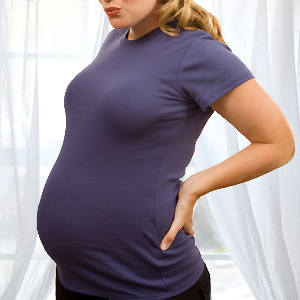Pregnancy sciatica

Pregnancy and sciatica coupled together can be a worst combination. As such, for a woman pregnancy is a crucial time; it can get terrible with sciatic pain, which can be physically gruesome and psychologically agonizing at once.
What is sciatica?
Sciatica is one of the many side effects of pregnancy although unlike other typical side effects, it does need not affect only pregnant women. Sciatica refers to the nerve that allows feeling in the muscles of the legs and feet. It is the long nerve that runs from one's lower back to the back of the legs and feet.
How does sciatica affect pregnancy?
The sciatica nerve can get inflamed, due to pressure in the back or in case of an injury. This results in sciatic pain. A persistent or chronic pressure in the sciatic nerve can result in weakness in the leg and the surrounding areas. One can experience numbness and tingling. Most women describe this sensation as similar to the pricks of
pins and needles when the leg falls asleep.
Although sciatica is not a result of being pregnant, women develop sciatica during pregnancy. There could be pressure on the sciatic nerve which can lead to backache and other discomfort.
Most of the times, sciatic pain at the time of pregnancy results from damage to a disc in the spine. During pregnancy, women are more prone to disc injury, and this causes inflammation in the tissues surrounding or result in direct pressure to the nerve. There are times when the pelvic pain during pregnancy is mistaken as sciatic pain.
What are the symptoms of sciatica in pregnancy?
It can be construed by her as sciatica pain if any of the following occurs:
- She feels pins and needles prick in the lower back or leg or in the affected foot.
- There is shooting or burning in the leg, buttock or lower back.
- There is pain in the lower back area or the one behind the pelvis which may even
extend into the foot.
- There is numbness in her leg and/or feet.
Women suffering from sciatica experience shooting pains and paralyzing numbness especially in the lower back and buttock areas. This may sometime be felt at the back of the thighs. The pain can be severe enough to limit mobility almost entirely. It has to be remembered that this is caused by the position of the fetus inside the womb and practically very little can be done to relieve her of the situation until the baby is born.
Treating pregnancy sciatica
In many women, the sciatica pain seems to disappear on its own. Sometimes, this lasts up to duration of six weeks or more.
- Routine visits to the therapist should help to relieve at least some of the symptoms. Many a times, manual therapies can help relieve pressure and discomfort associated with pregnancy back pain.
- Over-the-counter medications for sciatica have to be essentially avoided. When pregnant, this is the worst remedy, which can be even worse than the disease itself.
- Some find massage therapy helpful in relieving inflammation symptoms associated with sciatica. A massage can definitely help to reduce muscle tension. It can also help to relieve the tightness and reduce some sciatica symptoms.
- Therapeutic bath is yet another good option for curing sciatica pain. Prepare an immersion bath tub with about 135 liters of hot water at 400 degrees C, with 1 or 2 kilograms of Epson salt added. She needs to drink a glass of cold water and have her head covered with a cold towel.
Under the supervision of a therapeutic bath specialist she can follow the procedure to lie on the bath tub, which is a panacea for sciatica pain and other symptoms of rheumatism, neuritis, kidney disorder and so on.
However, caution should be exercised to ensure that the bath is clean and the water once used should not be sued again. The temperature of the bath should not cross the prescribed limits and this bath can be taken only till the third month of pregnancy.
- Proper posture control in the way she walks, sits, uses the pillow and the type of bed she uses, schedule of taking food all such things has to be carefully planned.
Similarly, slumping at a computer for long hours or standing with baby on one
hip can contribute to lower back discomfort.
- Select and do the most friendly yoga exercises in consultation with a physiotherapist.
- A therapist can provide a list of beneficial exercises and strengthen the pelvic
floor muscles, abdominal muscles and back muscles. These will definitely help
in labor and delivery and the time after.
- Several doctors prescribe a combination of soft tissue massage, bed rest, and a
soothing wet heat alternated with ice pack applications to help calm muscle and
nerve spasms.
- It is recommended for pregnant women to wear only flat shoes or the ones with low
heel. It is necessary not to wear shoes that throw the weight backwards as this
can cause additional strain on the lower back and legs.
- Sleeping on one side on a very firm mattress is recommended by most doctors. She can even sleep on the floor with pillows rolled up under her knees. While rising from bed, she needs to roll onto one side first and let weight of her feet and legs dangle over the edge of the bed and then pull her body into an upright sitting position. This enables less stress on lower back muscles, and she is less likely to develop painful muscle spasm.
There is quite a little that can be done to prevent the onset of sciatica during pregnancy. Yet, women who exercise regularly, do not overeat before pregnancy and during early pregnancy are seen to have an easier time in dealing with sciatica pain. This is primarily because of the fact that those with good muscle tone are better equipped to support their body structure and exhibit greater control over their range of movement during a sciatica attack.
Top of the Page: Pregnancy sciatica
Tags:#pregnancy sciatica
 Planning Pregnancy
Planning Pregnancy Pregnancy Diet and Exercise
Healthy Weight Gain in Pregnancy
Pregnancy Food Cravings
Pregnancy Heartburn
Improving Fertility after 35
Ovulation Test Strips
Pregnancy Symptoms
Early pregnancy cramping
Early pregnancy Test
High Risk Pregnancy
More on Pregnancy
 Natural Childbirth
Natural Childbirth Premature Birth
Pregnancy Massage
Pregnancy Problem
Pregnancy Due Date Calculator
Amniocentesis
Twin Pregnancy
Ectopic Pregnancy
Pregnancy Morning Sickness
Molar Pregnancy
Pregnancy Ultrasound
Constipation during pregnancy
Insomnia during Pregnancy
Smoking during Pregnancy
Teen Pregnancy
Exercise during pregnancy
Late Term Abortion
Sign of Miscarriage
Pregnancy Fatigue
Pregnancy Gas
Pregnancy sciatica
Belly Wrap after Pregnancy
Emotional Health during Pregnancy
Lactating Mother
Infertility
Recurrent Miscarriage
Pregnancy Varicose Veins
Postpartum Depression
Epidural
Premature Infant
Top of the Page: Pregnancy sciatica
Popularity Index: 101,058

